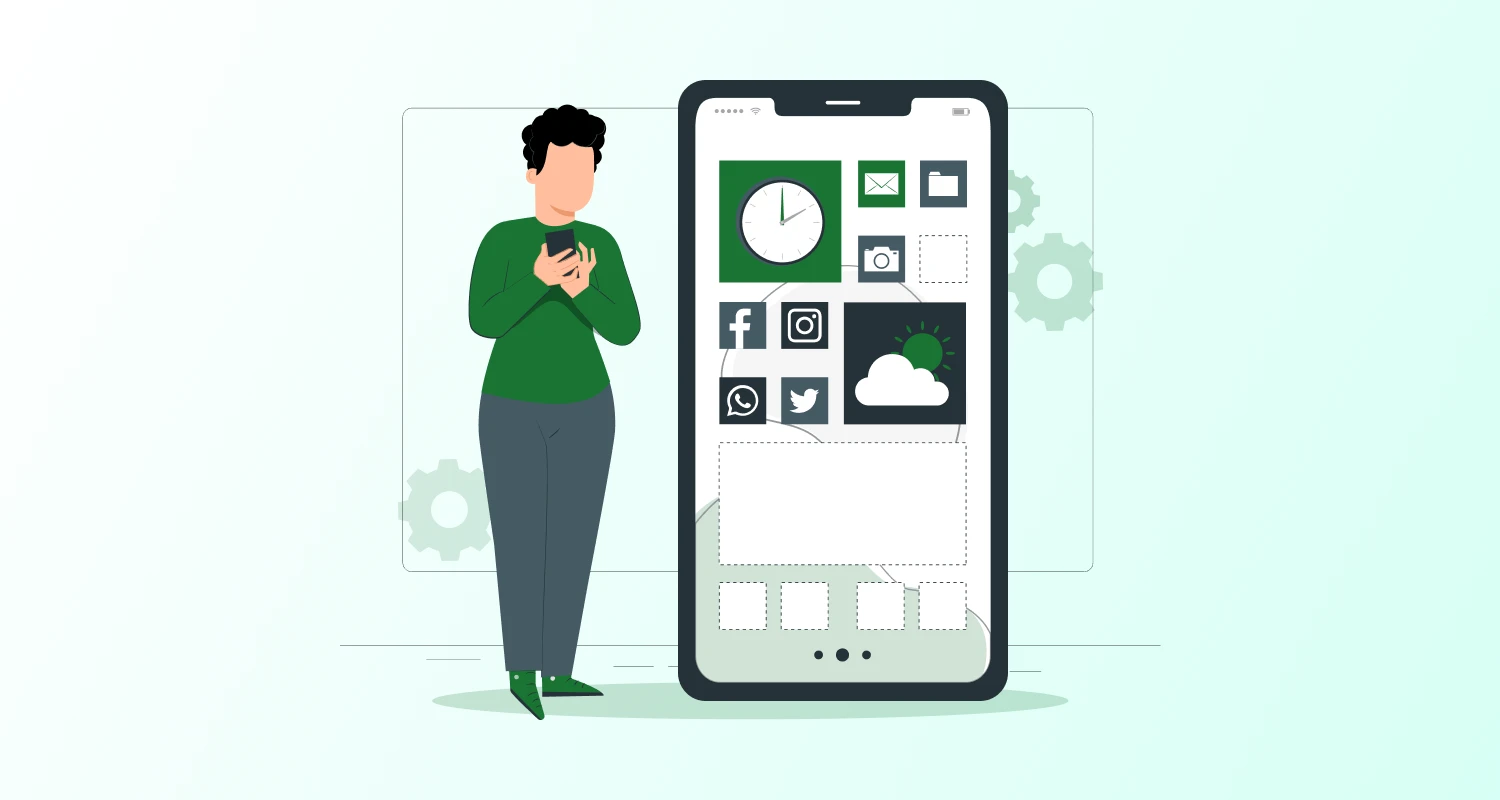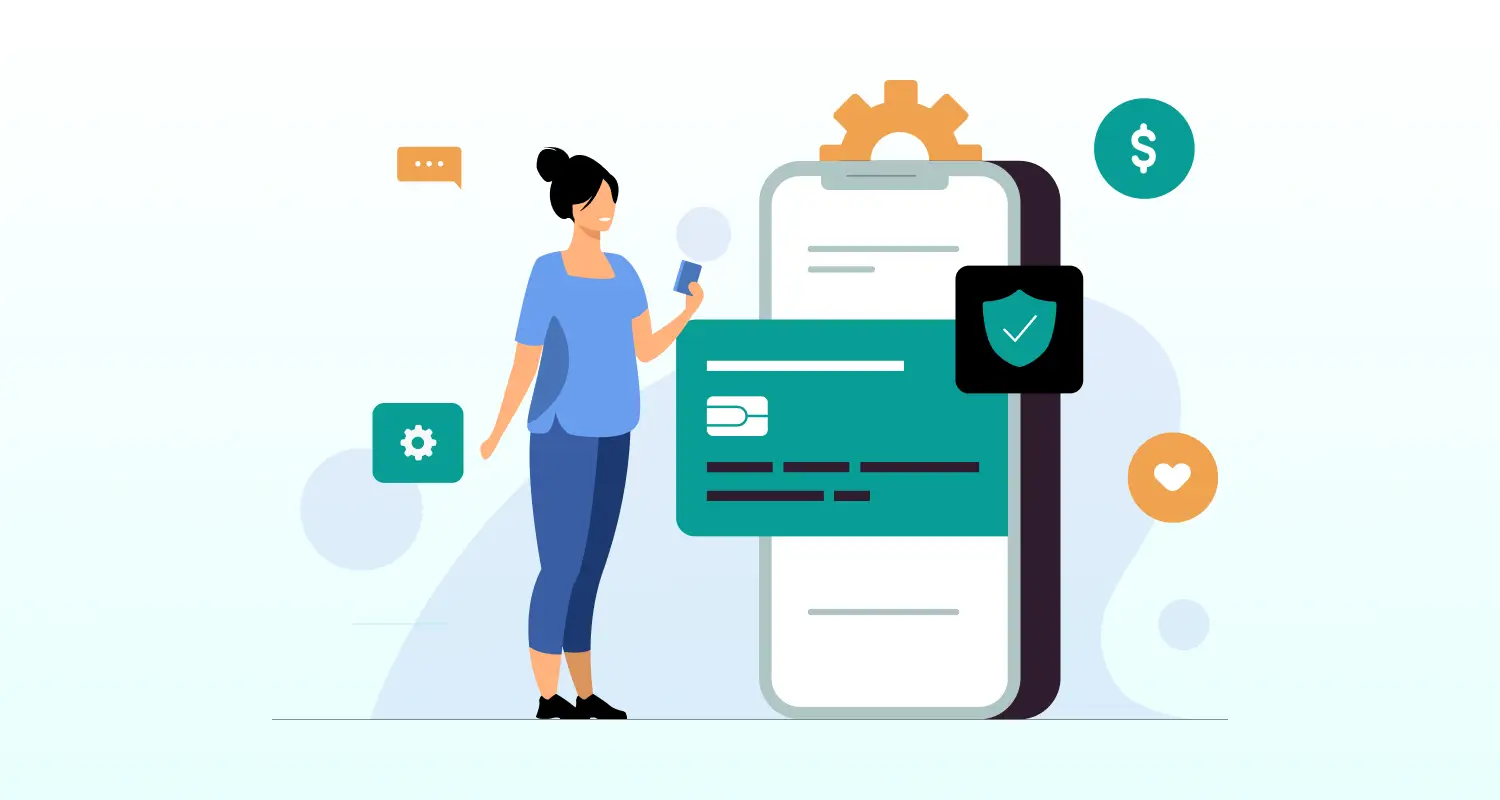Quick Summary: Tired of slow checkouts, missing products, or unstructured customer info? Modern POS systems are combining next-gen technologies like cloud, mobile tools, and AI-driven insights. This blog dives into how these smart systems drive efficiency, uncover growth opportunities, and elevate every customer interaction.
When your business is growing, each transaction counts. Retailers earlier used traditional cash registers, but are now moving to cloud-based systems for good reason. Modern POS solutions help companies scale quickly, access new payment technologies, and keep up with omnichannel demands, all while maintaining a strong in-store experience.
So, what is causing this move to cloud-based, mobile POS systems? Is it just about better hardware, faster lines, or real-time dashboards?
The truth goes deeper. Leading merchants have discovered a more profound advantage. Modern POS platforms provide access to AI-powered analytics at scale, diversify fulfillment options through unified inventory, and create an operating model that is more agile than traditional, server-closet-bound systems. The role of a POS system is no longer limited to tracking sales records; it is also used for responsibilities like personalized promotions, supply-chain signals, and employee gamification.
What is a Modern POS System?
A Modern POS (Point of Sale) System is far more than a cash register. It’s a cloud-connected platform that can manage sales, inventory, and customer interactions in real time. Unlike traditional systems, which just record transactions, modern POS systems are able to manage multiple functions at the same time and often integrate with other business tools.
Cloud vs Traditional POS
Traditional POS systems rely on on-premise hardware and software. They often require manual updates, have limited flexibility, and make data sharing across locations difficult. In contrast, cloud-based POS systems store data on secure servers that are accessible online. This unlocks capabilities of real-time reporting, automatic updates, and remote management across multiple locations. Cloud POS also scales easily as your business grows.
Mobile and Tablet-Based POS Systems
Modern POS systems are no longer confined to a fixed register. Mobile and tablet-based POS solutions help sales associates to process payments, check inventory, and even manage customer accounts from anywhere in the store or even off-site. This mobility improves efficiency, reduces checkout times, and opens opportunities for pop-up shops, events, and outdoor sales. You can reach out to a professional mobile app development services team to get this benefit.
Understanding the Impact: The Current POS Revolution
The Rise of Cloud POS Adoption
The global POS software market is valued at $13.53 billion in 2025, out of which 74% of businesses in 2025 prefer cloud-based POS software.
The Global Unified-Commerce Market
The US POS terminal market is estimated at $23.47 billion in 2030, with mobile and contactless payment technologies.
Key Features of Modern POS Systems
Real-time Inventory Tracking
The POS system subtracts each sale from on-hand quantities instantly and triggers low-stock alerts or automatic re-order points. RFID and barcode scans update counts at the shelf, reducing variance to under 1%.
Multi-store and Omnichannel Support
A single cloud dashboard unifies stock, pricing, and promotions across every location and digital channel. Buy-online-pickup-in-store (BOPIS), ship-from-store, and cross-location returns work without manual reconciliation.
AI-powered Sales Insights
Machine-learning models inside the POS forecast demand, suggest cross-sells, and schedule staff based on hourly traffic patterns. Early pilots show 6–9 % uplift in the average basket with zero human intervention.
Contactless and Digital Payment Options
Tap-to-pay cards, Apple Pay, Google Pay, QR wallets, and biometric checkout are certified out of the box. Transactions finish in under two seconds and reduce physical touch points.
Role-based User Access and Security
Cashier, manager, and owner permission levels control refunds, price edits, and report views. Two-factor authentication, end-to-end encryption, and tokenization cut PCI audit hours by 75 %.
Integration with CRM, ERP, and eCommerce platforms
Open APIs connect the POS to popular CRMs, ERP suites, and ecommerce software development stacks. Customer profiles, financial entries, and online orders stay synchronized in real time.
Core Benefits of a POS System for Small Business and Enterprises

1. Enhanced Innovation and Problem-Solving
AI tools can suggest cross-sells to customers in real time, and cameras can detect when someone leaves without paying, alerting staff immediately. Using modern tech like React, Flutter, Node, and Go also lets teams quickly test new ideas at checkout.
2. Access to Advanced Technologies
Cloud POS providers introduce features like biometric payments, digital gift cards, and AI-powered receipt summaries much sooner than traditional systems. IT teams no longer have to wait years for important updates.
3. Risk Mitigation
Cloud systems can keep transactions running smoothly, even if a data center has problems. Using tokenized card data also reduces security requirements, which in turn lowers audit costs and insurance premiums.
4. Faster Checkouts and Improved Customer Experience
Modern POS systems cut tap-to-approval time to under two seconds with contactless NFC, mobile wallets, and scan-and-go apps. Line-busting tablets and self-service kiosks lower wait times during peak hours.
5. Centralized Data Management
Every sale, return, and inventory adjustment flows into a single cloud database that can be accessed from any location or device. Real-time dashboards eliminate spreadsheet merges, give headquarters instant visibility into SKU-level performance, and let marketers trigger personalized offers before the customer leaves the store.
6. Streamlined Accounting and Reporting
Automated end-of-day reconciliation posts totals directly to QuickBooks, SAP, or NetSuite via pre-built connectors. Role-based reports for sales tax, tender summaries, and commission calculations are generated in one click, reducing month-end close from days to hours and cutting bookkeeping costs up to 40%.
7. Scalability for Growing Businesses
Cloud licenses spin up new lanes, pop-up shops, or franchise locations in minutes without hardware servers or software installs. Seasonal businesses can scale from 10 to 300 registers during the holidays and back down again, paying only for active seats. This is ideal proof that the best POS system for small businesses is also powerful enough for global expansion.
Industries Benefiting from Modern POS Upgrades and Integrations
| Industry | Benefits of Modern POS Integrations |
| Fashion & Apparel | RFID inventory sync, endless-aisle kiosks, TikTok-style try-on receipts with QR look-books. |
| Grocery & Convenience | Weight-integrated self-checkout, AI-driven shrink detection, SNAP/EBT contactless enablement. |
| Hospitality & F&B | Pay-at-table tablets, split-bill automation, tip-optimization algorithms that raise average gratuity 18%. |
| Beauty & Wellness | Appointment-linked POS, subscription box upsells, AI skin-scan results pushed to customer CRM. |
| Sports & Entertainment | Mobile queue-busting, NFC wristband payments, in-seat merch delivery synchronized with game clock. |
Fashion & Apparel
Modern POS systems in fashion stores sync RFID inventory in real time, power endless-aisle kiosks, and print TikTok-style try-on receipts with QR lookbooks that link directly to ecommerce software development pages, turning every fitting room into a shoppable content studio.
Grocery & Convenience
Weight-integrated self-checkout lanes, AI-driven shrink-detection cameras, and SNAP/EBT contactless enablement all run on the same cloud POS system, reducing fraud while shortening queues. API integration services connect the lane to loyalty apps built by mobile app development services teams for instant coupon redemption.
Hospitality & F&B
Pay-at-table tablets, split-bill automation, and tip-optimization algorithms raise average gratuity by 18%. Payment API integration development services ensure the integrated POS system communicates with both the kitchen display and the guest’s smartphone, allowing orders, payments, and feedback to occur in one fluid journey.
Beauty & Wellness
Appointment-linked POS systems for small businesses let salons upsell subscription boxes at checkout and push AI skin-scan results straight to the customer’s CRM. Hire mobile app developers to wrap the whole experience into a branded loyalty app that books, sells, and re-books automatically.
Sports & Entertainment
Mobile queue-busting apps, NFC wristband payments, and in-seat merch delivery synchronized with the game clock all rely on a cloud POS system that scales from 50 to 50,000 seats in minutes. Web development services create the fan portal where tickets, merchandise, and concessions are all in one digital wallet.
The Evolution of POS Deployment: Three POS Systems You Should Know About
SaaS Plug-and-Play: The Flexible Fix
Card readers that connect to an iPad work well for pop-up shops and seasonal stores. The business keeps control, while the vendor manages the technology behind the scenes. This setup is great for short-term events.
Project-Based Rollout: The Transactional Model
Retailers can hire mobile app developers with experience in retail to handle the entire POS upgrade, covering everything from hardware and wiring to training and compliance, all for a set price within 90 days. The partner manages the process, and the CIO approves the project once key goals like speed and reliability are met.
Dedicated POS Center of Excellence (CoE): The Strategic Goal
Some companies create dedicated teams with designers, payment experts, and security engineers who treat the POS as an ongoing project. They can release new features every week, like new payment options or loyalty programs, without needing to visit each store.

Real-World Success Stories of Modern POS System Implementations
Zara (Inditex): Global RFID & Mobile POS
When Inditex set a goal to unify inventory across 2,000+ Zara stores in 96 countries, leadership realized that static cash-wraps and nightly manual counts were the bottleneck. The fashion giant replaced traditional registers with a cloud-native POS system that pairs handheld RFID guns with iPod-based mobile checkout. Real-time stock visibility now travels from the sales floor to design teams in Arteixo within minutes, shortening the famed “concept-to-rack” cycle even further. The project paid for itself in under a year by cutting markdowns and labor hours, proving that an integrated POS system can be both a cost play and a growth lever.
Nike House of Innovation: Experiential Checkout
Nike wanted its flagship House of Innovation locations to feel like apps you could walk through. The brand merged physical and digital commerce by giving every associate a scan-and-go phone tied to a cloud POS system that syncs instantly with the SNKRS app. Smart lockers, dynamic inventory pools, and biometric payments turn sneaker drops into friction-free events. Fifty percent of in-store revenue now ties to digital member profiles, turning the POS system into a data-collection engine that fuels 1:1 marketing and limited-release hype.
Sweetgreen: POS-Driven Kitchen Ops
Fast-casual salad chain Sweetgreen treats every bowl as a data point. The company replaced legacy registers with a cloud POS system that streams item-level sales to a machine-learning engine every 15 seconds. Algorithms predict how much kale, chicken, or avocado each of the 220 locations will need in the next four hours, down to the gram. The result is a double win: customers get fresher ingredients, and the company trims both food cost and environmental impact.
POS System Integrations That Drive Efficiency
Integrating your POS system with adjacent business tools turns every transaction into an automated workflow, eliminating duplicate data entry, cutting labor hours, and giving teams a single source of truth. Below are the highest-impact integrations and the measurable gains retailers, restaurants, and experience-driven brands report after deployment.
| Feature/Benefit | Traditional POS | Modern POS |
| Sales Recording | Yes, basic | Yes, with detailed reporting |
| Inventory Management | Limited, often manual | Real-time, unified across stores and online |
| Payment Options | Cash, card | Cash, card, digital wallets, contactless |
| Customer Engagement | Minimal | Loyalty programs, personalized promotions, AI-driven insights |
| Analytics & Insights | Basic sales totals | AI-powered analytics, trend forecasting, operational insights |
| Mobility & Accessibility | Fixed terminals | Cloud-based, mobile and tablet access |
| Integration | Standalone | Connects with eCommerce, ERP, CRM, and other business tools |
| Employee Tools | Basic logging | Role-based access, gamification, performance tracking |
| Scalability | Limited, requires hardware expansion | Easily scales with business growth without new hardware |
Best Practices for Modern POS Transformation

1. Start with Omnichannel Journey Maps
- Map every shopper path: online orders, curbside pickup, in-aisle purchases, returns, and ship-to-friend.
- Ensure the POS vendor supports each hand-off out of the box.
- Early mapping prevents costly changes later and highlights which APIs, inventory calls, and loyalty triggers should be stress-tested during demos.
2. Insist on Open APIs & Event Streams
- Look for POS systems that broadcast events like basket-opened, payment-captured, and receipt-printed through lightweight webhooks.
- Webhooks allow easy integration with AI upsell engines, CRM triggers, or automation tools without rewriting core code.
- Avoid vendors that hide data or charge extra for integration toolkits, as this slows innovation and raises the total cost of ownership.
3. Pilot in the “Friendliest” Region First
- Start with a tech-savvy flagship or franchise location that embraces new technology.
- Staff in these locations help uncover user-experience bugs early and create internal case studies.
- A controlled pilot allows IT to fine-tune network quality, offline modes, and peripheral drivers without affecting peak-season sales.
4. Train Associates as “Tech Ambassadors”
- Cashiers should be able to demo tap-to-pay, explain digital receipts, and troubleshoot Face ID.
- Use short, mobile-first video modules (2–3 minutes) for bite-sized training.
- New hires can onboard in hours, not days, while improving customer confidence on the floor.
5. Measure Experience, Not Just Uptime
- Track post-checkout NPS, median queue length, and basket-building speed instead of only server uptime.
- Combining sentiment with throughput data reveals friction that technical metrics miss, such as small EMV delays that cause abandonment.
CMARIX Expertise in Leading 5 POS System Integration
| POS System | Description |
| Square POS | Easy-to-use mobile POS; CMARIX adds ERP/CRM integration and analytics. |
| Lightspeed POS | Strong inventory & multi-store support; CMARIX enables AI forecasting and system sync. |
| Clover POS | Flexible hardware, app marketplace; CMARIX standardizes data and dashboards. |
| Shopify POS | Online/offline unification; CMARIX connects ERP, marketing, and analytics tools. |
| Zeller POS | Simple all-in-one terminal; CMARIX provides enterprise-grade integrations. |
Square POS
Square is known for its user-friendly interface, mobile POS options, and wide ecosystem of payments, invoicing, and loyalty apps. This is ideal for small to medium-sized retail and food outlets. Square offers cloud-based dashboards and fast deployment.
CMARIX Expertise: We can extend Square’s native integrations to connect with ERP, CRM, and custom inventory systems, enabling multi-location synchronization and advanced analytics for sales forecasting.
Lightspeed POS
Lightspeed stands out for deep inventory management and multi-store support. It handles serialized products, bundles, and complex pricing models, making it ideal for growing retail chains. Lightspeed also offers omnichannel capabilities, syncing online and offline sales.
CMARIX Expertise: CMARIX can build robust middleware to ensure Lightspeed integrates seamlessly with finance, loyalty, and warehouse systems, while unlocking AI-driven demand forecasting and automated replenishment.
Clover POS
Clover offers flexible hardware options and a mature app marketplace, making it a versatile solution for SMBs. It supports multiple payment types, quick setup, and moderate customization. However, add-ons can increase costs, and the inventory logic is less advanced than Lightspeed.
CMARIX Expertise: CMARIX can help standardize Clover data across multiple locations, link it to external CRM and ERP systems, and implement real-time operational dashboards for managers and executives.
Shopify POS
Shopify POS is built for merchants who already operate in the Shopify ecosystem. It provides seamless online and offline unification, with strong ecommerce synchronization, inventory management, and loyalty program integration.
CMARIX Expertise: We can enhance Shopify POS by connecting it to third-party ERP, marketing automation platforms, and AI-powered analytics tools, making it suitable for both omnichannel growth and data-driven decision-making.
Zeller POS
Zeller is a newer POS + payments solution that combines all-in-one terminal functionality with POS-lite features. It is ideal for small retailers, cafés, and pop-up shops, offering simple onboarding, low transaction fees, and basic inventory management. Its integration capabilities are currently limited.
CMARIX Expertise: We can layer Zeller with enterprise-grade integrations, linking it to CRM, ERP, accounting systems, and loyalty programs, giving smaller merchants the capabilities of larger operations while keeping onboarding simple.
The Final Word: From Transaction to Connection
The modern POS is no longer the place where you swipe and forget. It is the real-time brain that remembers every customer, predicts every need, and restocks the shelf before you even notice it is empty. Brands that treat POS as a utility will watch agile competitors turn checkout into a loyalty-building, margin-expanding, data-generating superpower.
Adopting a cloud-native, AI-first point-of-sale is not an IT project; it is a revenue strategy. Start with the customer’s perfect journey, reverse-engineer the integrations you need, and pick a platform that can grow from one pop-up to a global omnichannel empire. The cash register had a good 140-year run. The future belongs to the POS that fits in your pocket and thinks like your best store associate.
FAQs for Modern POS Systems
How do smart POS systems differ from traditional POS?
Smart POS systems go beyond simple transaction recording. Unlike traditional POS, they are cloud-connected, offer mobile and tablet access, and provide real-time analytics. They also support AI-driven insights, omnichannel operations, and flexible payment options like tap-to-pay and pay-at-table.
What are the key features of modern POS systems?
Modern POS systems include real-time inventory tracking, AI-powered sales forecasting, and multi-store management. They support contactless payments, digital wallets, role-based user access, integrated invoicing, and virtual terminals. Mobility and smooth integration with other business tools are also standard.
Can POS systems integrate with existing software?
Yes. Modern POS platforms connect with CRM, ERP, accounting software, ecommerce platforms, and loyalty programs. Open APIs and event streams allow businesses to automate workflows, sync inventory, and unify customer data across channels.
How secure are POS systems for online and in-store payments?
Modern POS systems use end-to-end encryption, tokenization, and two-factor authentication to protect transactions. Cloud-based backups and secure servers reduce downtime risks, while integrated fraud detection and PCI-compliant processing keep both online and in-store payments safe.
Can POS systems scale with business growth?
Absolutely. Cloud POS solutions allow businesses to add new registers, pop-up shops, or franchise locations without extra hardware. Seasonal spikes, multi-location expansion, and mobile or tablet-based terminals can all be scaled instantly, paying only for active seats or devices.







